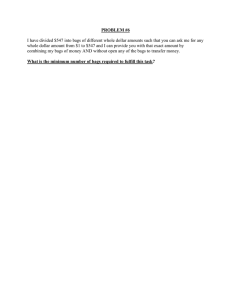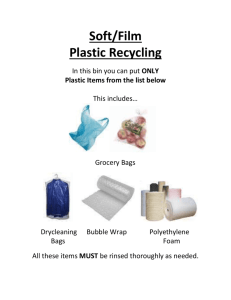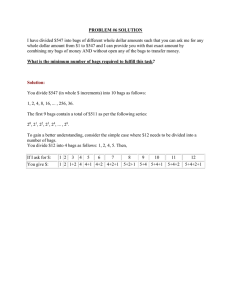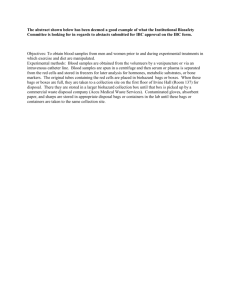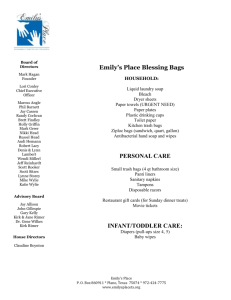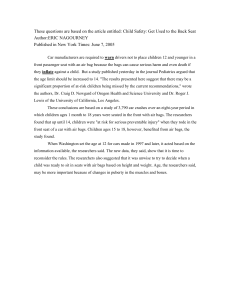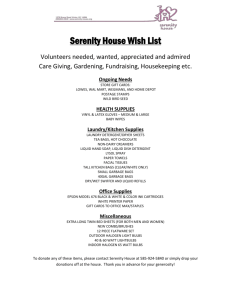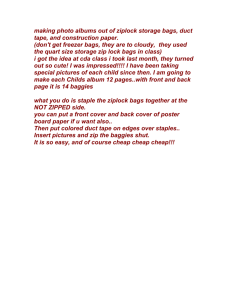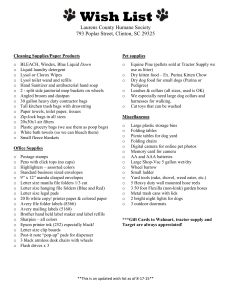Library Staff Workshop
advertisement
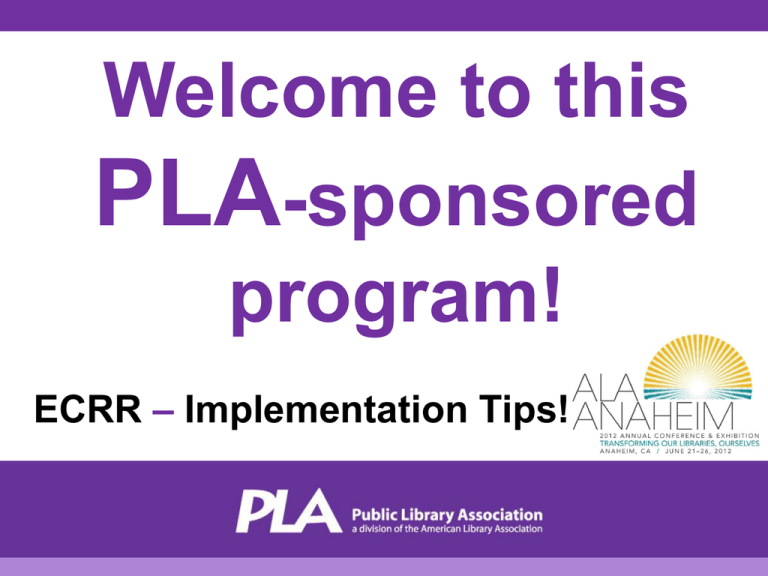
Welcome to this PLA-sponsored program! ECRR – Implementation Tips! Janis Cooker, Youth Coordinator St. Mary’s County Library jcoordinator@stmalib.org 301-863-8188 x1006 Five simple practices help children get ready to read. Places to Play and Learn in the Library Active Learning Centers are located in the children’s area and around the library for you and your child to explore together. These Centers provide opportunities for you to enjoy meaningful play with your child and at the same time help your child develop early reading skills. Play is a child’s work! They learn, grow and develop through hands-on activities that include talking, reading, singing, writing and playing. The activities in the Active Learning Centers focus on these practices. Your library helps children get ready to read. Parent tips by each Active Learning Center describe to the parent why each activity is important. Talking at the Library • • • • • • • • Whisper Tube Puzzles Set the Table Alphabet Bags Find It Tubes Light Table Felt Board Turning Tracker • Flight Bags • Community Helper Dress Up • Story Village • Touch and See • Make a Face Singing at the Library • Learning Spots in Bathrooms Nursery Rhymes at Changing Stations Wash Your Hands in Children’s Room • AWE Computers Books you can Sing! Your library helps children get ready to read. Reading at the Library • Have a conversation with the child around a book before you read it. • A picture walk is not reading the book. It’s talking about the pictures—getting to know the book together. Talking and reading at the Library! We have books for you to take home and read together. Side by Side Books These are books chosen by the children’s librarians of St. Mary’s County, and we label them on their spine, and on the inside cover we list easy activities to enrich the content of the chosen book, as well as a dialogic question to spur child-friendly conversation. These books are to encourage interaction between a care-giver and a child in conjunction with the reading of a good book. Environmental Print Definition: Environmental Print is the print of everyday life: The symbols, signs, numbers, and colors found in McDonald's, Wal-Mart, Exxon, Pizza Hut, 7-Up, and on websites, for instance. They offer excellent entry points for young children to begin to learn to read, write, and do math. Resources for environmental print are: Books, billboards, calendars, catalogs, comics, containers, coupons, flyers, greeting cards, grocery stores, journals, labels, magazines, menus, newspapers, office supply packaging, posters, recipes, road signs, snack bags, telephone books, and websites. Environmental Print Writing at the Library • • • • • • • • Play Islands Gears Magna Doodles Alphabet Bags Touch and See Make a Face Magnetic Letters Coming Soon- Post Office Playing at the Library • • • • • Set the Table Community Helper Dress Up LEGOS on Light Table Hop Scotch Haleycopter Other Topics Beach Out to Eat Park Post Office Biking Grocery Store Go for a Walk Summer Learning Fun! Read! Learn! Grow! Sensory Box Ants on a Log Sing Along Books with Beat Puppets Side by Side Books Shaving Cream Fun Color Magic Play Dough Play Dress Up
